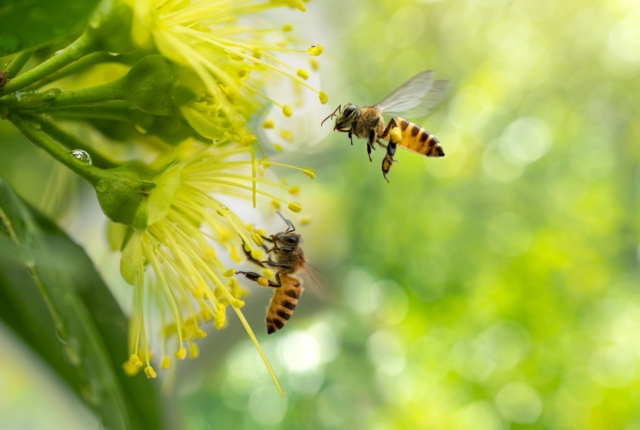Which bees inhabit Emilia-Romagna?

For the first time, a research group from the University of Bologna has studied genetic diversity in honeybee populations bred in the Emilia-Romagna region. The results, derived from mitochondrial DNA analysis and published in Scientific Reports, show that the (typically Italian) Apis mellifera ligustica is the most present one, but they also record a significant presence of the Carniolan honeybee (native of Slovenia), and traces of the Africanized bee and European black bee.
‘Thanks to the cooperation of all the beekeeping associations of the region, the sampling activities involved more that 1200 colonies. It was the largest research of this type carried out in Italy, and probably the one with the highest sampling density in the world’, explains Luca Fontanesi, professor at the Department of Agricultural and Food Sciences of the University of Bologna, who coordinated the study. ‘The results show a prevalence of mitochondrial DNA characteristic of the Apis mellifera ligustica, a native subspecies fundamental for beekeeping. However, it’s important to pay attention to the spread of other mitochondrial DNA types from non-native subspecies. Their presence indicates that other subspecies or non-native genetic lines have been introduced in the region, and that hybridisation phenomena may occur, potentially leading to a loss of genetic integrity of the Apis mellifera ligustica’.
The Apis mellifera ligustica, also known as the Italian bee, is known and appreciated for certain characteristics – docility, high productivity, resistance to disease and great adaptability to different climates – that make her extremely suitable for beekeeping.
Therefore, in 2019 Emilia-Romagna introduced a regional law to ensure the preservation of this bee. The law prohibits to use subspecies other than the ligustica one, and it imposes to create preservation areas around the apiaries destined to breeding, reproduction and fecundation of the selected beekeeping material.
To begin monitoring the results of this initiative, the researchers have carried out a massive analysis of the mitochondrial DNA of the bee populations of Emilia-Romagna, successfully creating a map of the distribution of mitochondrial haplotypes of bees in the regional territory.
The most frequent (86.6%) appeared to be the C1 haplotype, characteristic of the ligustica subspecies. However, the investigation also showed the presence of haplotypes characteristic of other non-native or hybrid subspecies introduced in the region. In particular, the presence of C2 haplotype, which identifies the Carniolan honeybee (Apis mellifera carnica) - subspecies largely spread in Slovenia, Austria and the Balkan area - resulted to be relatively high (11%). Additionally, the research identified haplotypes belonging to the A line (1.3%), characteristic of the Africanized bee (Apis mellifera adansonii) and other subspecies of the Mediterranean area, including two new haplotypes previously unknown, and some of the M line (1.1%), characteristic of the European black bee (Apis mellifera mellifera).
‘The relatively high presence of Carniolan bee haplotypes – previously recorded, in Italy, only at the borders with Austria and Slovenia – indicates that this subspecies has been extensively introduced in Emilia-Romagna, perhaps due to its strong adaptability to mountainous regions such as the ones of the Apennines’ explains Fontanesi. ‘To preserve the ligustica subspecies from genetic erosion, it’s important to monitor this phenomenon, as well as the potential introduction of African-native haplotypes. This requires high levels of attention from both the beekeeping sector and the public one’.
The research was developed as part of the BEE-RER project of the University of Bologna, and it was published in Scientific Reports under the title ‘Distribution of honey bee mitochondrial DNA haplotypes in an Italian region where a legislative act is protecting the Apis mellifera ligustica subspecies’.
The study was carried out by the Animal and Food Genomics Group, a research group of the Department of Agricultural and Food Sciences of the University of Bologna. The group is coordinated by Professor Luca Fontanesi and it conducts research in genomics applied to beekeeping and to species of zootechnical interest. Various authors participated in the study, including Valeria Taurisano, Anisa Ribani, Dalal Sami, Kate Elise Nelson Johnson (Fulbright fellow), Giuseppina Schiavo, Valerio Joe Utzeri, Samuele Bovo e Luca Fontanesi.

